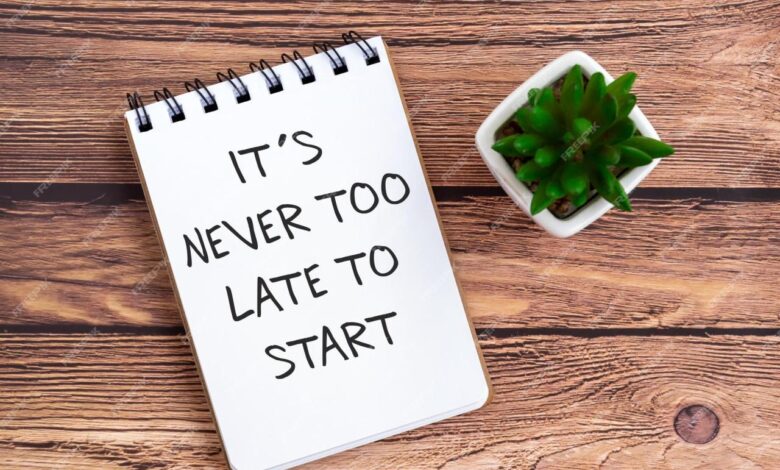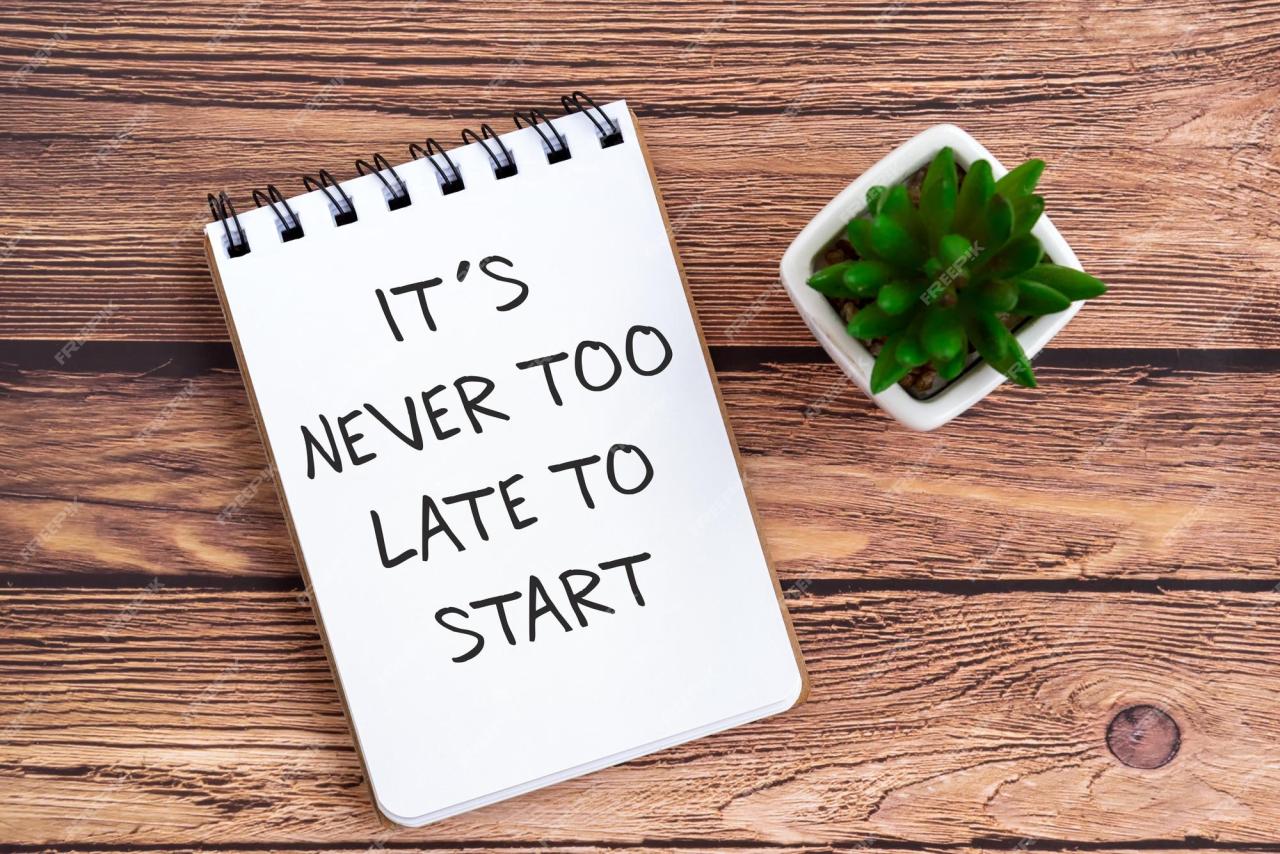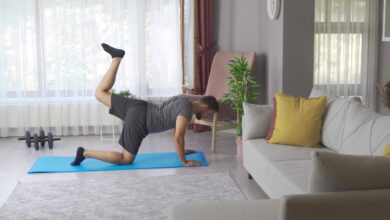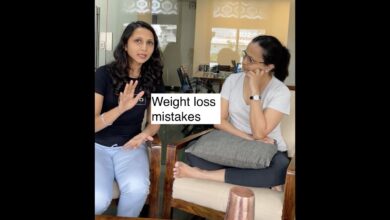
Never Too Late: Get Moving and Embrace a Healthier You
Never too late get moving, it’s a powerful message that resonates deeply. It’s a reminder that regardless of age, past inactivity, or perceived limitations, we can all embark on a journey towards a healthier, more fulfilling life. This journey isn’t about achieving unrealistic fitness goals; it’s about finding joy in movement and reaping the incredible benefits that come with it.
We’ll explore the transformative power of starting an exercise routine, no matter where you are in your fitness journey. We’ll debunk common excuses, craft realistic plans, and discover the joy of finding activities that resonate with you. From adapting exercise to your needs to uncovering the mental and emotional benefits, we’ll pave the way for a healthier, happier you.
Adapting Exercise to Your Needs
It’s never too late to start moving, and it’s important to remember that everyone’s fitness journey is unique. There’s no one-size-fits-all approach to exercise, and it’s crucial to tailor your workouts to your individual needs and abilities.
Finding Exercises for Different Age Groups and Fitness Levels
Exercise can be beneficial for people of all ages and fitness levels. Here are some examples of exercises suitable for different groups:
- For seniors:Gentle activities like walking, swimming, yoga, and tai chi can help improve balance, flexibility, and strength.
- For beginners:Start with low-impact exercises like walking, cycling, or water aerobics. Gradually increase the intensity and duration as you build fitness.
- For those with chronic conditions:Consult with a healthcare professional to determine safe and effective exercises that address your specific needs. Examples include modified yoga, water exercises, or strength training with lighter weights.
Consulting with a Healthcare Professional
Before starting any new exercise program, it’s essential to consult with a healthcare professional, especially if you have any underlying health conditions or injuries. They can assess your current fitness level, identify any potential risks, and recommend appropriate exercises for your needs.
It’s never too late to get moving, and understanding the factors that can lead to muscle loss can help you stay on track. You might be surprised to learn about the 6 sneaky ways you might be losing muscle , like stress or not getting enough sleep.
But don’t let these factors discourage you – it’s all about making informed choices and taking action to build and maintain your strength, no matter your age.
Modifying Exercises for Physical Limitations or Injuries
If you have any physical limitations or injuries, it’s crucial to modify exercises to avoid further harm. Here are some tips:
- Reduce the intensity:Start with shorter workouts and gradually increase the duration and intensity as you feel comfortable.
- Use proper form:Focus on maintaining correct form to avoid strain on your joints and muscles. Seek guidance from a qualified trainer or instructor.
- Use adaptive equipment:There are many assistive devices available to help you modify exercises, such as resistance bands, stability balls, or handrails.
- Listen to your body:Pay attention to any pain or discomfort. Stop the exercise if you experience any sharp or persistent pain.
The Mental and Emotional Benefits of Exercise

Beyond its physical advantages, exercise has a profound impact on our mental and emotional well-being. Regular physical activity can act as a powerful tool for managing stress, reducing anxiety and depression, and improving overall mood.
Exercise and Stress Reduction
Exercise is a natural stress reliever. When we engage in physical activity, our bodies release endorphins, which have mood-boosting effects. These endorphins can help to alleviate feelings of stress and anxiety. Moreover, exercise provides a distraction from daily stressors, allowing us to focus on the present moment and clear our minds.
Studies have shown that even moderate-intensity exercise, such as brisk walking or cycling, can significantly reduce stress levels.
It’s never too late to start moving your body! Even if you’re not aiming for dramatic weight loss, focusing on maintaining your current weight can be a fantastic way to improve your overall health and well-being. In fact, aiming for maintenance can actually help you reach your fat loss goals in the long run, as explained in this great article on why aiming to maintain weight can actually help fat loss goals.
So, no matter your starting point, remember that any step you take towards a healthier lifestyle is a step in the right direction.
Exercise and Anxiety
Exercise can be an effective strategy for managing anxiety. Physical activity helps to regulate the nervous system, reducing the body’s response to stress and anxiety triggers. Regular exercise can also improve sleep quality, which is essential for managing anxiety. Studies have shown that individuals with anxiety disorders who engage in regular exercise experience a significant reduction in their symptoms.
Exercise and Depression
Exercise plays a crucial role in combating depression. Regular physical activity can increase the production of neurotransmitters like serotonin, dopamine, and norepinephrine, which are associated with mood regulation. Exercise can also help to reduce inflammation in the brain, which is linked to depression.
Research has shown that exercise can be as effective as medication in treating mild to moderate depression.
It’s never too late to start moving your body, and the best part is that you can keep making progress! To avoid hitting a plateau and keep seeing results, check out these 6 ways to avoid workout plateaus and consistently progress.
Whether you’re a seasoned athlete or just starting out, these tips can help you stay motivated and keep pushing forward on your fitness journey.
Exercise and Sleep Quality, Never too late get moving
Exercise can improve sleep quality by promoting relaxation and reducing stress. Physical activity can help to regulate the body’s natural sleep-wake cycle, making it easier to fall asleep and stay asleep. It is recommended to avoid exercising too close to bedtime, as it can have a stimulating effect.
Exercise and Energy Levels
Contrary to what some might think, exercise can actually boost energy levels. Regular physical activity can improve cardiovascular health, increase oxygen intake, and enhance overall physical function. This leads to a feeling of increased vitality and energy.
Exercise and Cognitive Function
Exercise has a positive impact on cognitive function, including memory, attention, and processing speed. Physical activity increases blood flow to the brain, which nourishes brain cells and promotes the growth of new brain cells. Exercise can also help to improve cognitive flexibility and reduce the risk of cognitive decline.
Building a Supportive Community

The journey to a healthier lifestyle is often more enjoyable and successful when you have a supportive community cheering you on. Whether it’s a workout buddy, a fitness group, or an online community, having others to share your goals and challenges with can make a world of difference.
The Benefits of a Supportive Community
A supportive community can significantly enhance your motivation and accountability. When you have someone to exercise with, you’re more likely to stick to your workout schedule. You’ll also be more motivated to push yourself harder and achieve your fitness goals.
Finding a Workout Buddy or Joining a Fitness Group
There are many ways to find a workout buddy or join a fitness group. You can ask friends and family if they’re interested in working out with you, or you can look for groups online or at your local gym.
There are also many fitness apps that allow you to connect with other users and find workout buddies.
Online Communities and Resources
The internet is a great resource for finding support and motivation for your fitness journey. There are many online communities and resources dedicated to helping people achieve their fitness goals. These communities often provide forums for sharing tips, advice, and encouragement, as well as challenges and competitions to keep you motivated.
Celebrating Milestones and Recognizing Progress
It’s important to celebrate your milestones and recognize your progress along the way. This will help you stay motivated and on track. You can celebrate your milestones by treating yourself to something special, sharing your success with your friends and family, or simply taking a moment to appreciate how far you’ve come.
Long-Term Health and Well-being
Regular exercise isn’t just about looking good; it’s a powerful investment in your long-term health and happiness. Beyond the immediate benefits like increased energy and improved mood, physical activity offers a robust shield against chronic diseases and promotes longevity.
The Link Between Exercise and Chronic Disease Prevention
Numerous studies have established a strong correlation between regular exercise and a reduced risk of developing chronic diseases. These conditions, often associated with aging, can significantly impact quality of life. The American Heart Association, for example, recommends at least 150 minutes of moderate-intensity aerobic activity or 75 minutes of vigorous-intensity aerobic activity per week.
They also suggest incorporating muscle-strengthening activities at least twice a week. This guidance is based on extensive research highlighting the protective effects of exercise against heart disease, stroke, type 2 diabetes, certain cancers, and even cognitive decline.
The Long-Term Benefits of Physical Activity
Regular exercise offers a myriad of long-term benefits, impacting various aspects of your well-being:
Cardiovascular Health
Exercise strengthens the heart muscle, improves blood flow, and lowers blood pressure. This translates to a reduced risk of heart attacks, strokes, and other cardiovascular diseases. For instance, a study published in the Journal of the American Medical Association found that individuals who engaged in at least 150 minutes of moderate-intensity exercise per week had a 35% lower risk of dying from heart disease compared to those who were inactive.
Bone Density
Weight-bearing exercises, such as walking, running, and weightlifting, stimulate bone growth and increase bone density. This helps prevent osteoporosis, a condition characterized by weak and brittle bones, which increases the risk of fractures.
Muscle Strength
Exercise helps build and maintain muscle mass, which is crucial for maintaining mobility, balance, and strength as we age. Stronger muscles also improve metabolism, making it easier to manage weight and reduce the risk of developing diabetes.
Overall Health and Longevity
The cumulative impact of these benefits translates into improved overall health and increased longevity. Studies consistently show that individuals who maintain a physically active lifestyle have a lower risk of premature death and live longer, healthier lives.
Wrap-Up: Never Too Late Get Moving
Embracing movement isn’t just about physical well-being; it’s about embracing a lifestyle that empowers you to live life to the fullest. Whether you’re taking your first steps or pushing your limits, remember that every move counts. It’s never too late to get moving, and the journey begins with a single step.
So, take that step, find your joy in movement, and unlock a healthier, happier you.






